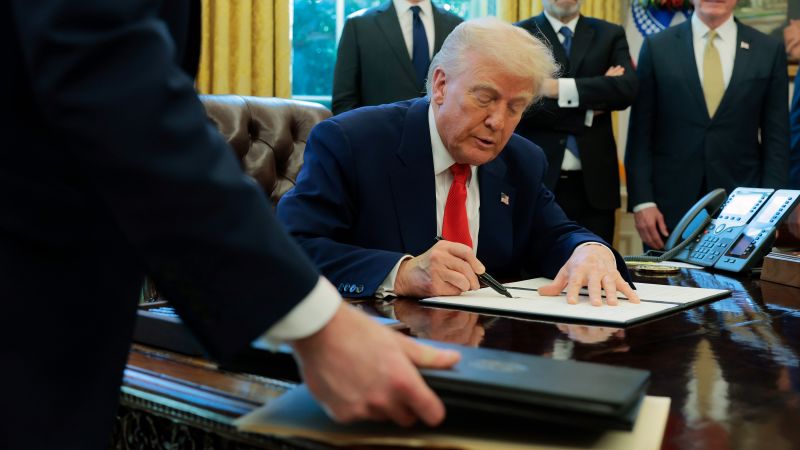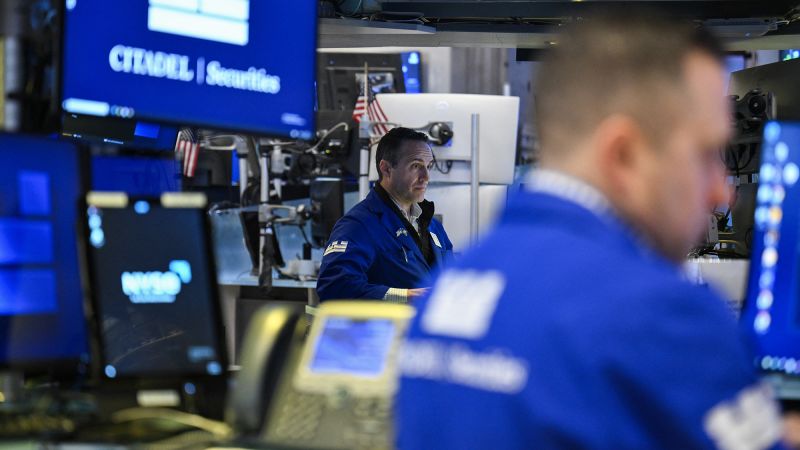In a bold move designed to reshape global trade dynamics, President Donald Trump and his team have unveiled a strategy that involves imposing alarmingly high tariffs on various countries. This tactic aims to force nations to the negotiating table, with the intent to ease some of these trade barriers—except when it comes to China, which remains a focal point in this intricate economic chess game. However, the administration’s 90-day pause on these tariffs leaves little time to broker complex deals with a multitude of countries eager to discuss terms.
Market Reactions to Tariff Strategies
Despite the administration’s optimistic outlook, financial markets have reacted skeptically. Following a volatile week, stock indices experienced a significant drop before making a temporary recovery. On Friday, the Dow Jones Industrial Average surged by 619 points (1.56%), while the S&P 500 and Nasdaq rose by 1.81% and 2.06%, respectively. A glimmer of hope emerged as Boston Federal Reserve President Susan Collins indicated support for the markets if distress signs appeared.
- Key Stock Movements:
- Dow: +619 points
- S&P 500: +1.81%
- Nasdaq: +2.06%
Bond Market’s Unusual Behavior
Traditionally, one would expect bond prices to increase during market turbulence, as US Treasuries are viewed as a safe haven. Surprisingly, bond prices have dipped, driven by a growing lack of confidence in the U.S. trade policy. JPMorgan Chase CEO Jamie Dimon recently expressed concerns that Trump’s "America First" approach could alienate key economic partners, jeopardizing the nation’s standing in the global market.
- Recent Bond Activity:
- Treasury yields soared above 4.5% on Friday, marking a significant increase from earlier in the week.
- Analysts at Citi noted that the rapid rise in rates adds to investor unease in a turbulent market.
Oil Prices Reflect Economic Concerns
The oil market is also signaling apprehension about an impending recession, with prices plummeting as fears mount over the potential impact of Trump’s trade policies on demand. On Friday, U.S. crude dipped below $60 a barrel, nearing a four-year low before a slight recovery.
- Current Oil Prices:
- U.S. Oil: $61.50 per barrel
- Brent Crude: $64.76 per barrel
This downturn is indicative of broader economic worries, as oil prices have historically served as a bellwether for economic health.
The Dollar’s Decline
In an unexpected turn, the U.S. dollar fell to its lowest point in three years, contradicting the typical pattern where tariffs are expected to bolster local currency value. Currency traders are increasingly concerned that the U.S. will suffer the most from the fallout of the trade war, leading to a sell-off of dollar assets.
- Recent Dollar Performance:
- The dollar index dropped by 0.9% on Friday, following a 2% decline the previous day.
- Gold prices soared past $3,200 per troy ounce, reflecting a surge of interest in safe-haven assets amid uncertainty.
Future of Trade Agreements
Despite the skepticism from financial markets regarding the Trump administration’s ability to forge substantial trade agreements swiftly, officials remain hopeful. Treasury Secretary Scott Bessent reported that over 70 countries are seeking discussions to negotiate their way out from under the stringent tariffs imposed by the U.S. Although initial talks may prioritize allies such as South Korea and Japan, the complexity of these negotiations cannot be underestimated.
- Current Trade Climate:
- The U.S. has imposed tariffs of 145% on China, which has countered with its own 125% tariffs.
- Economists continue to warn that the damage from existing tariffs may outweigh any potential benefits from new negotiations.
In summary, while the Trump administration is optimistic about its approach to international trade, the financial markets are sending a clear message of caution. The next few months will be critical as the U.S. strives to navigate these complex negotiations while addressing the immediate concerns of investors and global partners.











